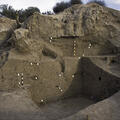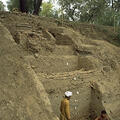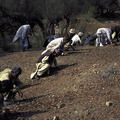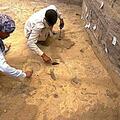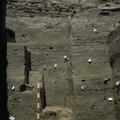Trench 39 South
Excavations in Trench 39 South on Mound AB in 1996 revealed an extensive deposit of the Kot Diji phase occupation dating to between 2800 and 2600 BC. A geometric button seal (38) was found in the upper part of this rectangular Trench 39 South.

